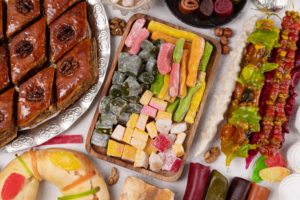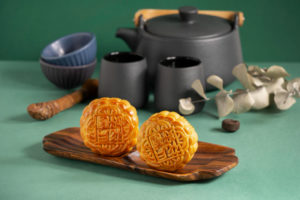Discover the art of making delectable Mochi Daifuku! A traditional Japanese treat that combines soft mochi with sweet fillings. Try our easy recipe today.
If you’ve ever explored the diverse world of Japanese confections, chances are you’ve encountered the delightful and chewy treat known as Mochi Daifuku. This beloved dessert has captured the hearts and taste buds of people worldwide, offering a unique blend of flavors and textures that leave a lasting impression. In this article, we’ll take a deep dive into the world of Mochi Daifuku, exploring its history, ingredients, preparation, and why it has become a beloved symbol of Japanese culinary artistry.
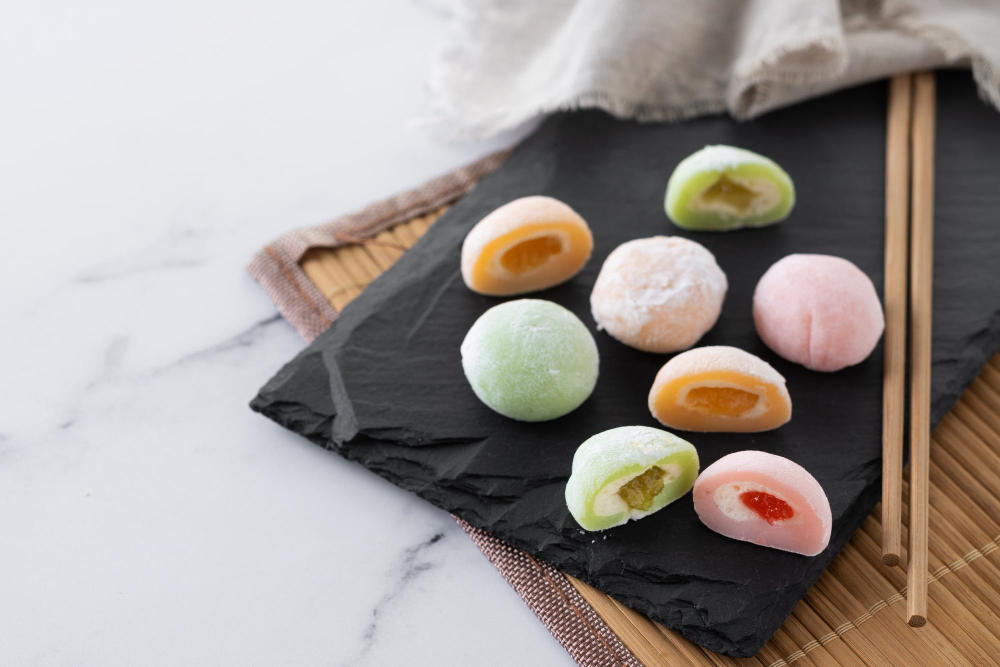
Introduction
Mochi Daifuku, often simply referred to as “Daifuku,” is a delectable Japanese confection that marries the chewy, glutinous goodness of mochi with a variety of sweet fillings. It’s a delightful combination that results in a treat with a unique play of textures and flavors, making it a true indulgence for the senses.
What is Mochi Daifuku?
Mochi Daifuku is a traditional Japanese sweet consisting of a soft, chewy mochi exterior that encases a flavorful filling. The term “daifuku” itself translates to “great luck,” and indeed, indulging in this confection is nothing short of a fortunate experience. The mochi shell is made from glutinous rice flour, which gives it its characteristic chewiness, while the fillings range from classic red bean paste to modern twists like fruit jams and matcha-infused cream.
A Brief History of Mochi Daifuku
The origins of Mochi Daifuku can be traced back to ancient Japan, where rice cakes (mochi) held profound cultural significance. Mochi was often used in religious ceremonies and festivals, symbolizing purity and prosperity. Over time, the innovation of filling mochi with sweet ingredients gave rise to the beloved Mochi Daifuku we know today.
In the Edo period, Mochi Daifuku gained popularity as a treat enjoyed during tea ceremonies, and its accessibility expanded as Japan’s culinary landscape evolved.
Ingredients that Create Magic
The allure of Mochi Daifuku lies in its simplicity and the quality of its ingredients. The mochi shell requires glutinous rice flour, which is responsible for its distinctive chewiness. The fillings, on the other hand, vary widely, from the traditional anko (sweet red bean paste) to modern adaptations like fresh fruits, matcha, and even ice cream.
Crafting Mochi Daifuku: A Step-by-Step Guide
Preparing the Mochi Dough
Creating the perfect mochi shell requires precision. Glutinous rice flour is mixed with water and sugar, creating a dough that is then steamed until it achieves its desired elasticity. This step is crucial in achieving the iconic chewiness that defines Mochi Daifuku.
Creating the Filling
The filling is a key player in the Mochi Daifuku experience. Anko, a sweet red bean paste, is a classic choice that offers a balance of sweetness and earthiness. However, modern variations experiment with flavors such as fruity jams, custards, and even chocolate.
Assembling the Daifuku
Bringing it all together involves wrapping the flavorful filling with the prepared mochi dough, ensuring a seamless and visually appealing exterior. The art of assembling Mochi Daifuku lies in maintaining the delicate balance between the mochi’s texture and the filling’s taste.
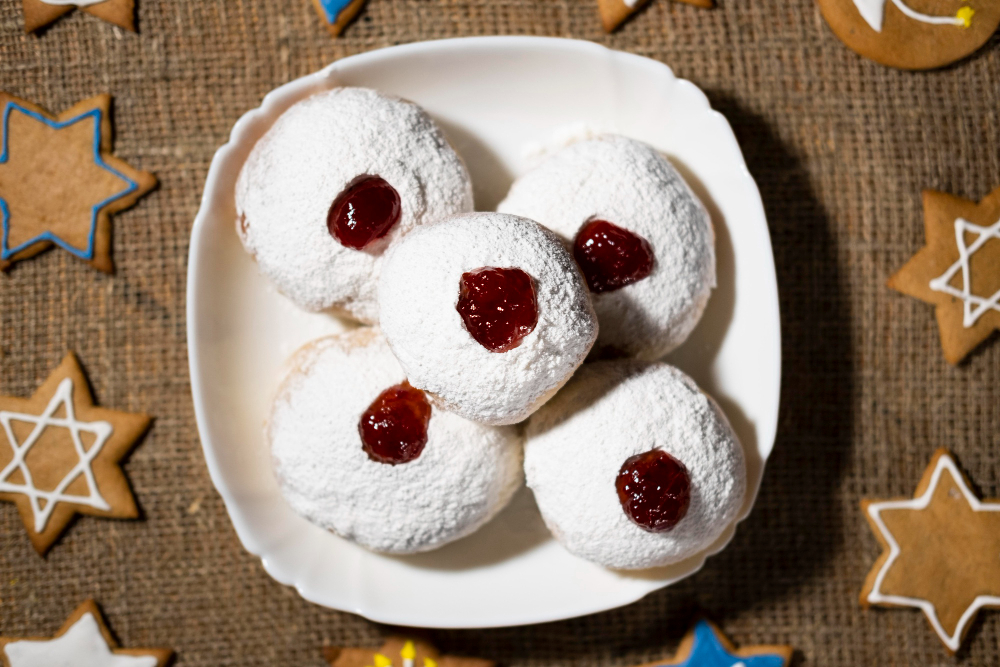
Variety in Mochi Daifuku
Mochi Daifuku’s versatility shines through its diverse array of fillings. While anko remains a beloved classic, innovative chefs have expanded the possibilities, resulting in exciting variations:
Traditional Red Bean Paste Filling
Anko, with its rich cultural heritage, continues to be a favorite. Its smooth, slightly nutty flavor complements the chewy mochi exterior, creating a harmonious blend of tastes and textures.
Fruity Delights: Strawberry and Mango Fillings
The burst of freshness from ripe strawberries or the tropical sweetness of mango takes Mochi Daifuku to another level. These fruity fillings add a vibrant twist, making each bite a refreshing experience.
Matcha Green Tea Mochi
For the matcha enthusiasts, the earthy bitterness of green tea finds a delightful partnership with the sweet mochi exterior. Matcha Mochi Daifuku not only tantalizes the taste buds but also offers a visual treat with its vibrant green hue.
Mochi Daifuku Around the Year
While Mochi Daifuku is a treat for all seasons, it takes on special significance during various times of the year.
Seasonal Specialties
Different seasons bring about unique fillings and presentations. Spring might see sakura-flavored mochi with delicate cherry blossom motifs, while autumn could introduce flavors like sweet potato or chestnut.
Festive Mochi: New Year’s Delicacy
During the New Year festivities, Mochi Daifuku takes on a ceremonial role. The act of pounding mochi, known as “mochitsuki,” is a cherished tradition symbolizing unity and renewal.
The Irresistible Allure of Mochi Daifuku
Mochi Daifuku’s popularity is no accident—it’s a result of the perfect symphony of textures and flavors.
Textural Symphony
The contrast between the soft, slightly sticky mochi exterior and the luscious, often gooey filling creates a delightful play of textures that keeps your palate intrigued.
Harmonious Flavor Profile
Mochi Daifuku’s appeal extends to its harmonious taste. The filling’s sweetness complements the mochi’s subtle flavor, resulting in a well-balanced treat that never overwhelms the senses.
Savoring Mochi Daifuku: Etiquette and Enjoyment
Experiencing Mochi Daifuku is not just about taste—it’s a multisensory journey.
Traditional Serving Methods
In Japan, Mochi Daifuku is often enjoyed with a cup of green tea. The act of savoring each bite mindfully enhances the overall experience, allowing you to appreciate the intricate flavors.
Modern Culinary Twists
Beyond tradition, Mochi Daifuku has found its way into modern culinary creations. From ice cream mochi to fusion desserts, innovation knows no bounds.
Mochi Daifuku: More Than Just a Dessert
Mochi Daifuku goes beyond being a delectable dessert—it holds cultural and culinary significance.
Cultural Significance
With its roots deeply embedded in Japanese culture and history, Mochi Daifuku symbolizes the connection between past and present, tradition and innovation.
Culinary Creativity
Chefs worldwide have been inspired by Mochi Daifuku, incorporating its textures and flavors into various dishes, redefining how we perceive traditional desserts.
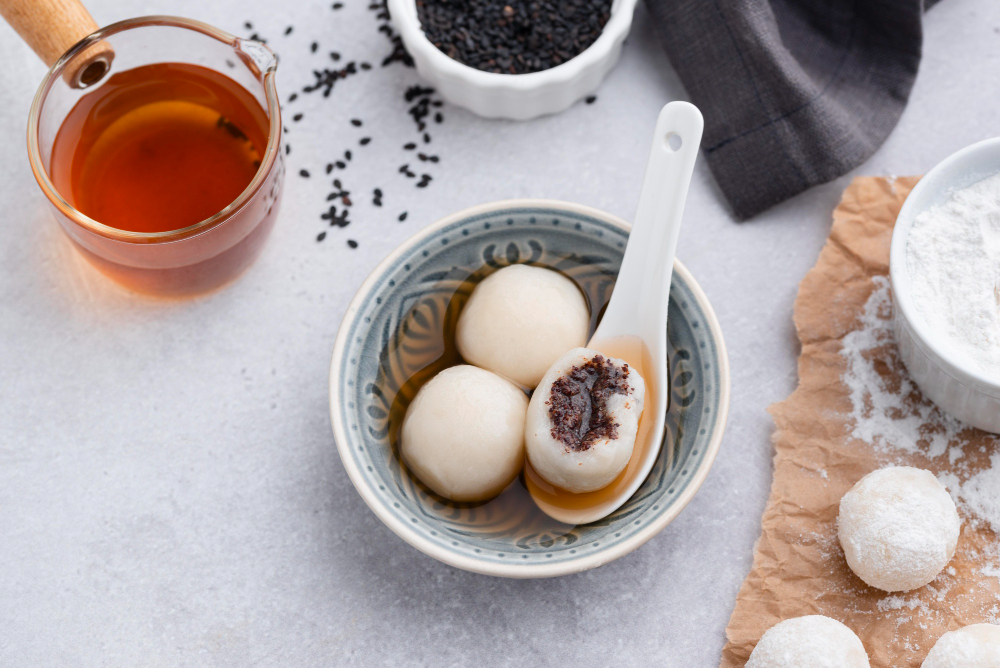
FAQs: Unraveling the Mysteries of Mochi Daifuku
What is the origin of Mochi Daifuku?
Mochi Daifuku’s origins trace back to ancient Japan, where it evolved from the ritualistic use of mochi into a delightful confection many enjoy.
Is Mochi Daifuku gluten-free?
Yes, Mochi Daifuku can be gluten-free when prepared using glutinous rice flour, which does not contain gluten.
Can I make Mochi Daifuku at home?
Absolutely! With the right ingredients and guidance, crafting Mochi Daifuku at home can be a rewarding culinary adventure.
How should I store Mochi Daifuku?
To maintain its freshness and texture, store Mochi Daifuku in an airtight container in a cool, dry place.
Are there savory versions of Mochi Daifuku?
While Mochi Daifuku is primarily associated with sweet fillings, some inventive chefs have experimented with savory variations, offering a new dimension to this classic treat.
Conclusion
In the world of culinary delights, Mochi Daifuku stands as a shining example of creativity, tradition, and exquisite taste. This beloved Japanese confection, with its chewy mochi exterior and delectable fillings, has woven itself into the fabric of Japanese culture and captured the hearts of people around the globe.
From its humble origins rooted in ancient rituals to its modern-day interpretations that push the boundaries of flavor and texture, Mochi Daifuku continues to be a symbol of culinary artistry. Its ability to bridge the gap between tradition and innovation is a testament to the enduring nature of this treat.
Whether you’re enjoying a classic red bean-filled Mochi Daifuku or indulging in a contemporary fusion creation, each bite is a celebration of the intricate craftsmanship and passion that goes into its making. So, the next time you encounter a plate of Mochi Daifuku, take a moment to appreciate the rich history, the cultural significance, and the sheer joy it brings to both the palate and the soul.
So, why not embark on your own Mochi Daifuku adventure? Treat your taste buds to this remarkable confection and uncover the captivating world of flavors and textures that make Mochi Daifuku a true masterpiece in the realm of sweets.




